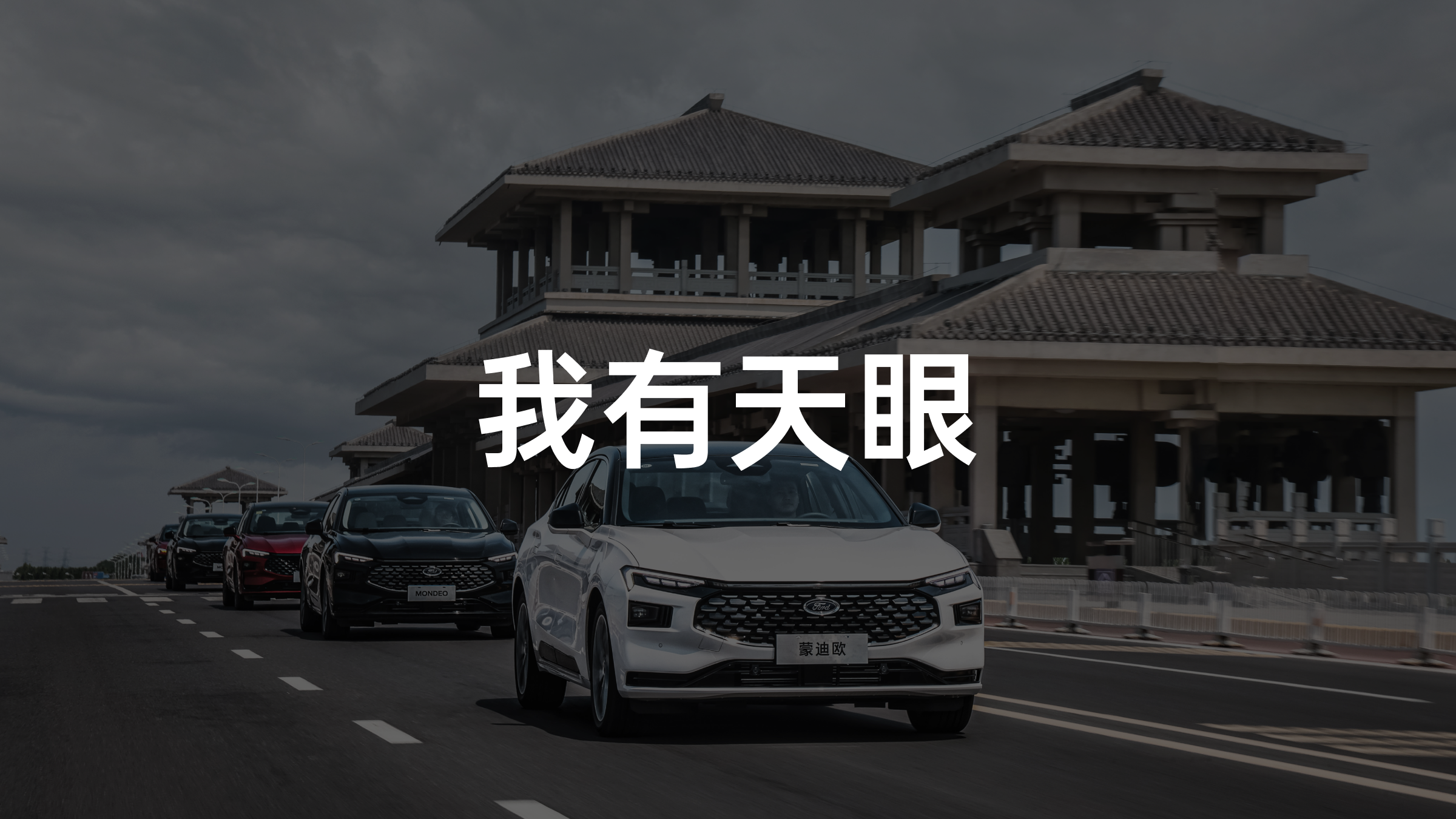In early May of this year, Amap launched signal light countdown feature on mobile phones. During navigation, the system displays the current status and countdown of the traffic lights, and if the traffic is heavily congested, the system will even display the number of red lights that need to be waited before passing through the intersection.
After the launch of this feature, it has received continuous positive reviews in the comment section. My friends who have used this feature find it very practical, especially some experienced drivers, who say that with this feature, they can know the signal light switching time in advance and judge whether they should speed up or slow down easily.
Obviously, being able to know the status of signal lights at intersections through mobile navigation, just like the addition of countdown function on traffic lights, can provide more information for every driver, thereby reducing anxiety while driving in urban areas.
Therefore, if this function is integrated directly into the vehicle’s dashboard display, what kind of driving experience would we have? In mid-June, Ford’s C-V2X vehicle-to-everything system officially landed in Xi’an. This is the fourth city where Ford’s vehicle-to-everything system has landed, following Wuxi, Changsha, and Guangzhou. We also went to the site to experience it firsthand.
Before introducing the on-site experience, let us briefly explain how this function works, which is the second most frequent question besides positive reviews in the comment section.
Whether it’s in Amap navigation or the Ford vehicle display, it belongs to one of the applications of V2X (vehicle-to-everything technology).
The full name of V2X is Vehicle to Everything, which mainly includes Vehicle to Vehicle (V2V), Vehicle to Infrastructure (V21), Vehicle to Network (V2N), and Vehicle to Pedestrian (V2P).
In simple terms, through a device similar to a WIFI transceiver module, vehicles are connected to other vehicles, infrastructure, pedestrians, etc. on the road. By combining the status of vehicles with the traffic situation on the road, the efficiency of travel can be improved, and the frequency of accidents can be reduced.
Currently, the technology of V2X vehicle-to-infrastructure cooperation is still in the early stages of development, and standards are being unified. The technology architecture adopted by Ford V2X is similar to that of a mobile cellular network, called C-V2X. It does not directly interact with roadside devices, but connects to cloud servers through a network to obtain/transmit roadside information.
In plain terms, all traffic lights are connected to the network, and our cars are also connected to the network, so the system can know the status of traffic lights.
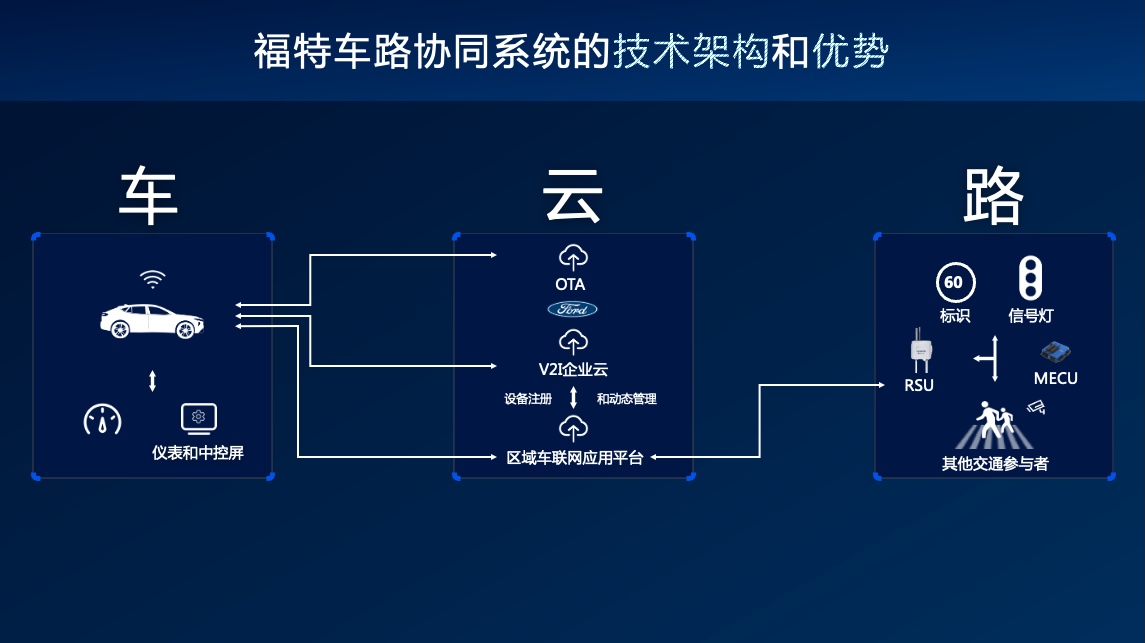
However, it is easy to solve the hardware problem of V2X on the vehicle side. To achieve this function, the key is that the roadside equipment can also connect to the network, and there is an interface to release this information. The support of roadside devices requires the government to build supporting infrastructure, so the experience of these functions is closely related to the intelligence level of city infrastructure.
The good news is that, on March 25, 2022, at the 8th China Electric Vehicle One Hundred People Forum 2022 “Cloud Forum”, Guo Shougang, deputy director of the Industry Department of the Ministry of Industry and Information Technology, said that, in order to promote the coordinated development of smart city infrastructure and intelligent connected vehicles, the Ministry of Housing and Urban-Rural Development and the Ministry of Industry and Information Technology jointly organized the dual-intelligence pilot work. After expert evaluations and field research, 16 cities were selected in two batches.
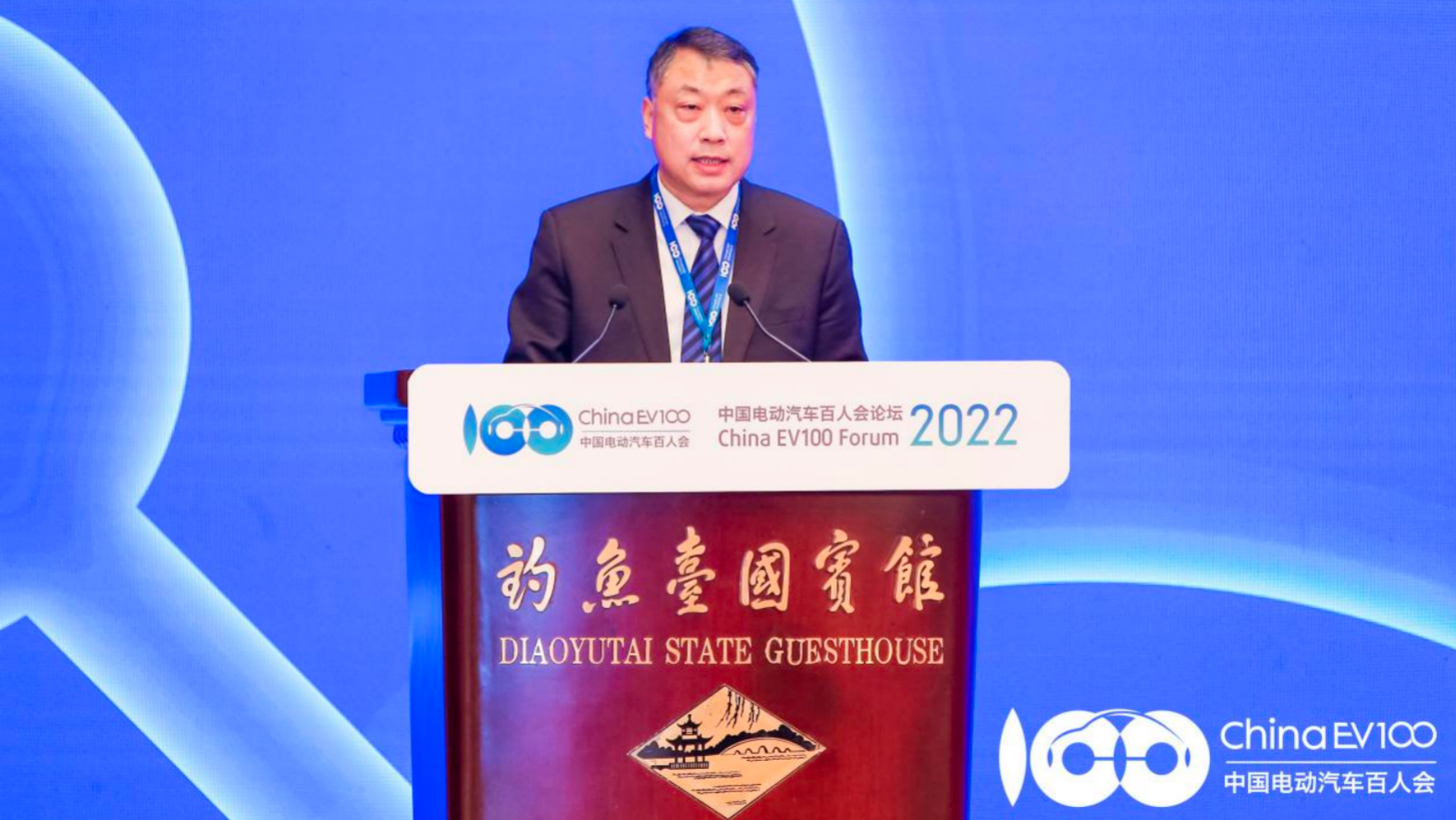
At the same time, Yang Hongyi, deputy director of the City Construction Department of the Ministry of Housing and Urban-Rural Development, stated that, based on the existing achievements of the Dual-Intelligence Pilot, next it will be guided by the needs of cities and citizens, to promote standardized results nationwide after the trial operation is successful, and further make good use of the Dual-Intelligence Pilot platform.
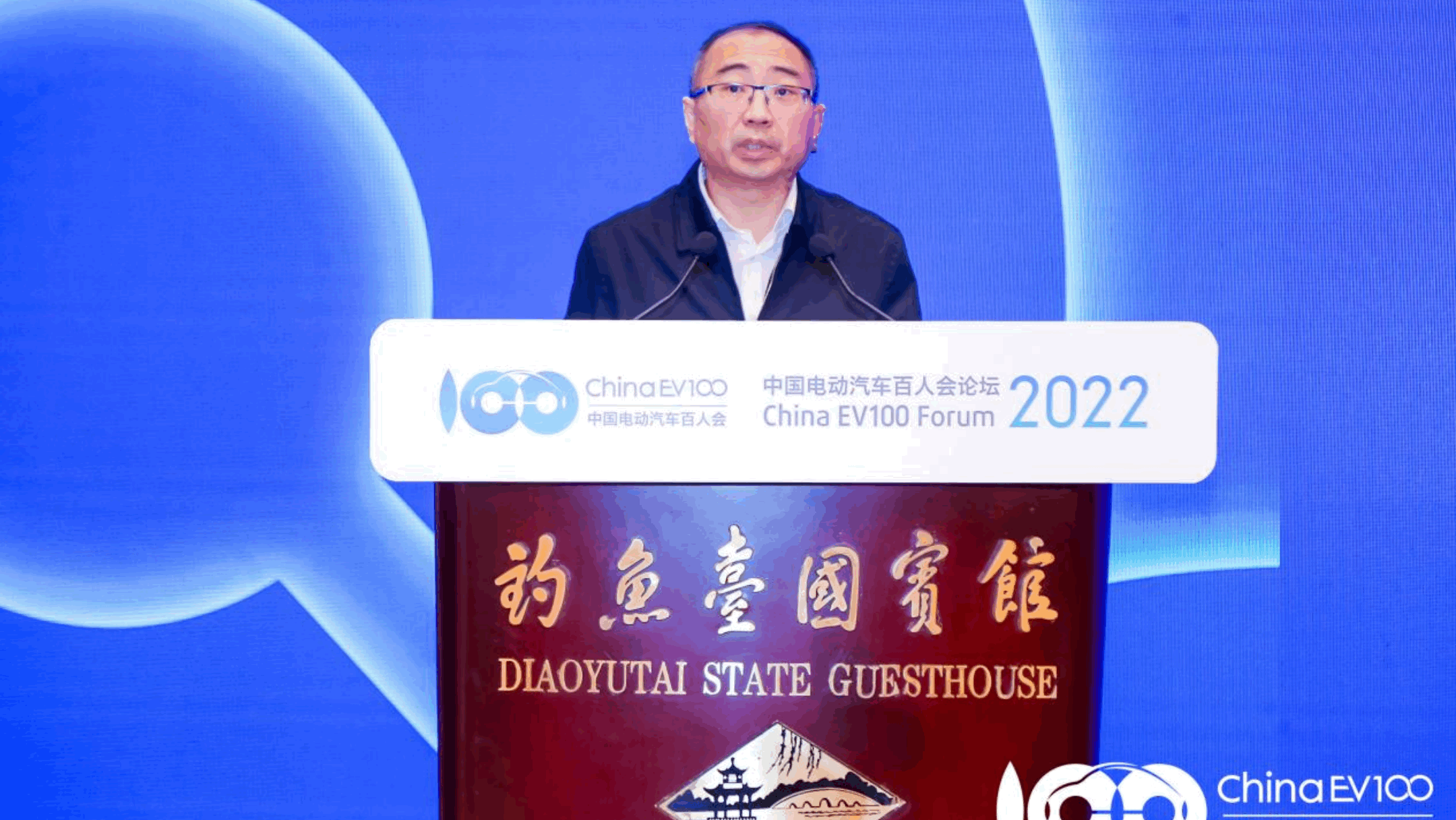
Therefore, in Ford’s C-V2X, we can see that the number of open cities and roads is continuously increasing.
After Wuxi, Changsha, and Guangzhou, Ford and partner NavInfo landed V2X in Xi’an. According to Ford’s official statement, C-V2X will be promoted to more cities across the country in the future.
You need to try it to know itThe Ford vehicle-to-everything (C-V2X) system can achieve C-V2X functions based on traffic signals synchronization. There are six specific functions:
-
Traffic signal notification
-
Green light start reminder
-
Green wave speed advice
-
Red light violation warning
-
Road information broadcasting
-
Electronic road sign
“In the early stages of C-V2X technology where the functions are not particularly rich, I believe that the focus of C-V2X is not on the quantity but more on the specific experiences. Therefore, we can pay attention to the interaction itself.”
Surprisingly, the new generation of Mondeo, the new F-150 Raptor, EVOS, Mustang Mach-E, Territory PLUS, and the all-new Explorer, six mass-produced models in the Ford lineup, are all equipped with the C-V2X system as standard.
As one of the media outlets that first experienced Ford’s vehicle-to-everything functionality in Xi’an, I was driving the new generation of Ford Mondeo at that time. The vehicle is equipped with a 12.3-inch full LCD instrument panel with a resolution of 2K, supporting map mapping and AR navigation. Notably, the multimedia screen located in the cockpit is 27 inches in size, directly supporting the central control and co-driver’s screen functions, with a 4k resolution and full-screen map display. “All the information on C-V2X is also reflected on these two screens.”
When the vehicle activates the C-V2X function enters a supported road section, the vehicle will display the countdown of the traffic lights on the instrument panel and central control screen.
In practical experience, the red and green light information of C-V2X is displayed on both the instrument panel and navigation, and the displayed time is almost the same as the visible signal seconds without delay. This feature can give drivers a lot of trust.
Especially for people like me, who are driving in Xi’an for the first time, or driving in an unfamiliar city, it can greatly reduce my anxiety about unfamiliar traffic conditions.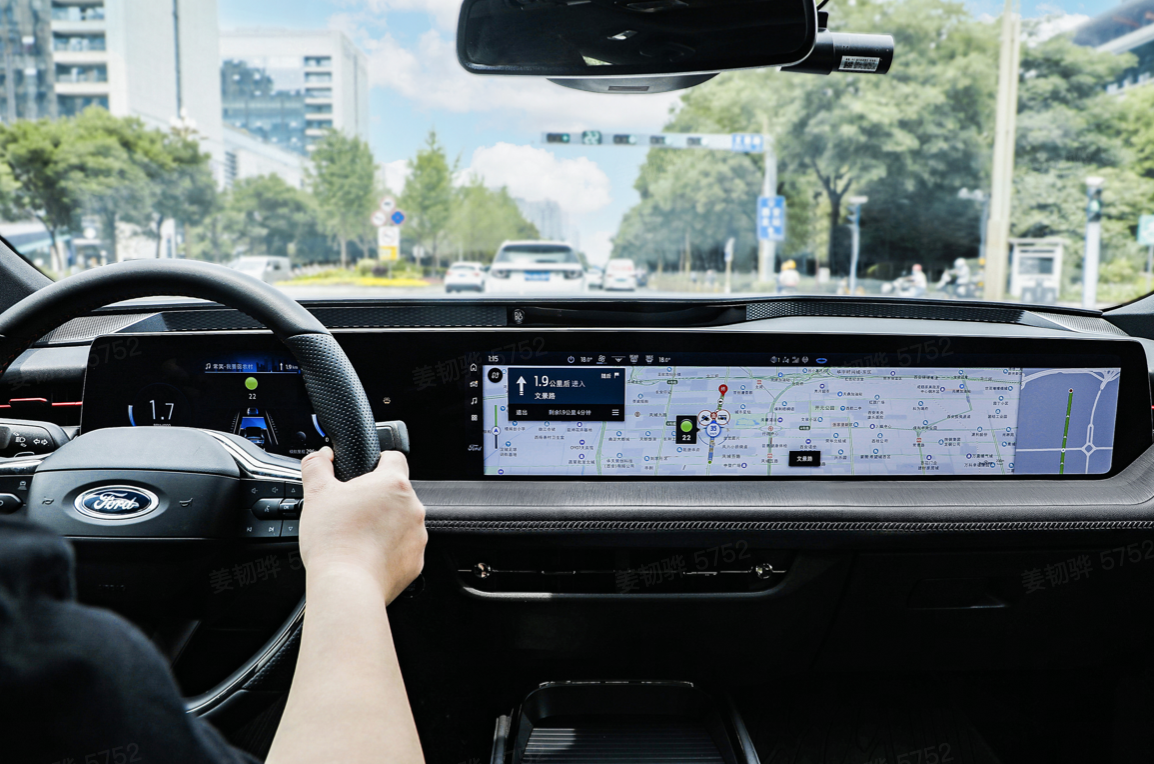
It should be noted that this feature is only available from the vehicle’s current position to the next traffic light intersection. In our actual experience, the instrument panel will only display traffic light information if the distance to the next traffic light is around 200 meters.
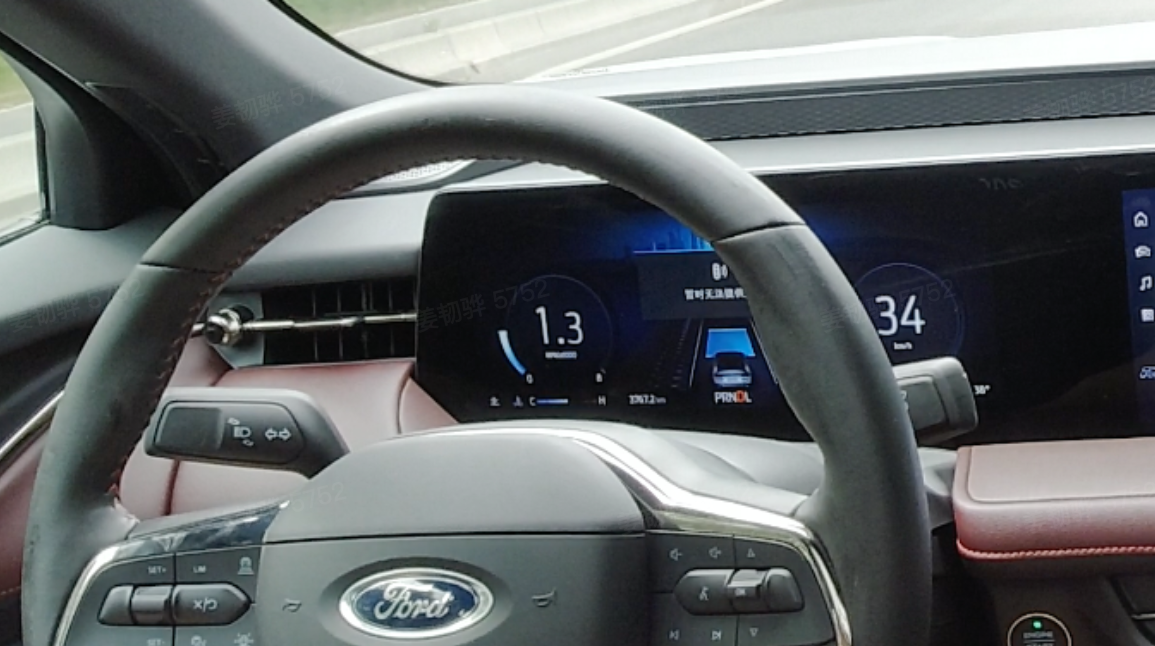
When you set up navigation in the car, the signal countdown function only displays the signal light that you need to follow at the next traffic light. For example, if you need to turn left at the next intersection, the instrument panel will only display the status of the left-turn signal at the next intersection, and this logic is completely correct.
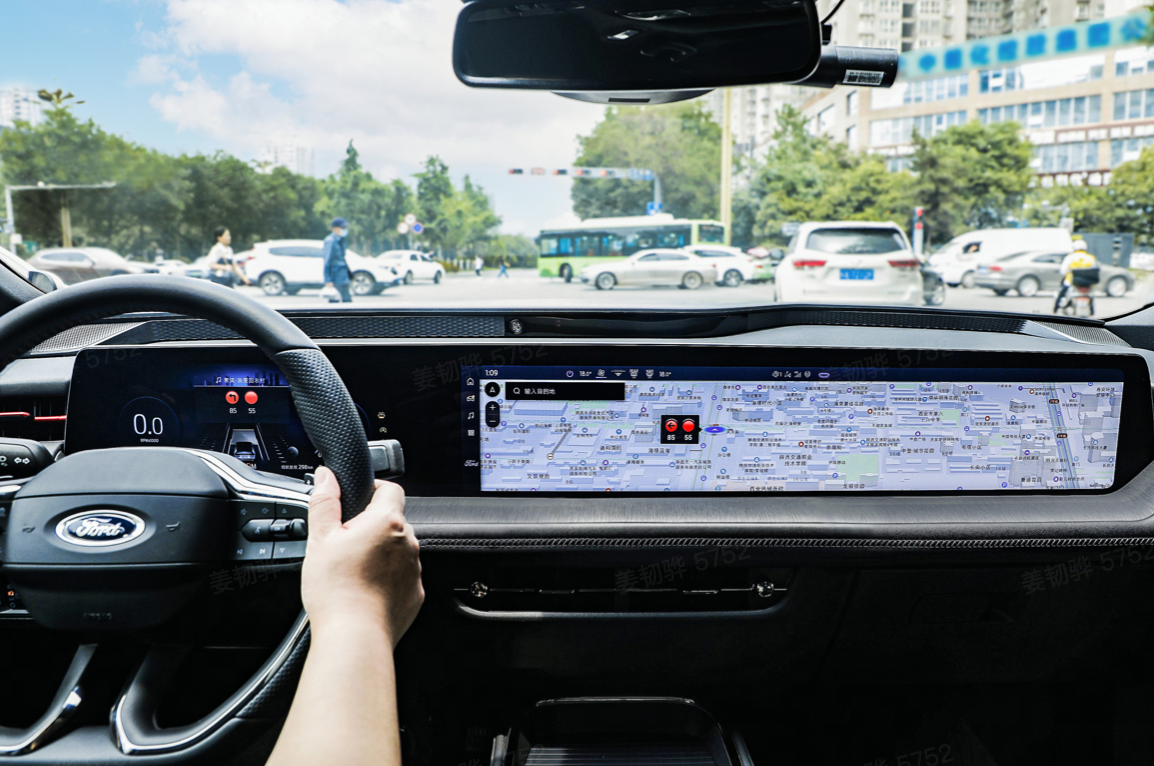
However, when you do not use navigation, the instrument panel of the vehicle will display the left-turn, straight-ahead, and right-turn signal lights at the next intersection at the same time.
For many users who are familiar with the route, it is possible to reach the same destination by going straight or turning at an intersection, and being able to predict which signal light will turn green in advance means that you can choose the corresponding lane early to avoid waiting for the light, thereby improving traffic efficiency, which is worthy of praise.
From the perspective of actual experience, C-V2X also has certain practical value in the use process. Someone in the comment section mentioned that there is no need to worry about not being able to see the traffic light due to the blockade of the car in front.
Personally, I have experienced running a red light due to following a bus or truck and not seeing the traffic light. Although it is possible to apply for reconsideration to cancel the penalty, the whole process is also very complicated. With the signal countdown and red light violation warning of Ford’s C-V2X, such incidents can be greatly reduced.
In Xi’an and during the previous test drive in Guangzhou, we had a deep understanding of this. We followed a bus, and because of the bus’s huge body, the entire traffic light was blocked. With the help of this function, I was able to maintain a safe distance from the bus and passed through the intersection smoothly before the red light.
In addition, the signal lamp reading function of C-V2X can accurately judge the timing of red and green lights to increase safety while helping drivers operate the accelerator and brake pedals more reasonably. When approaching a red light, the vehicle can slide to the stop line, thus saving fuel and electricity.
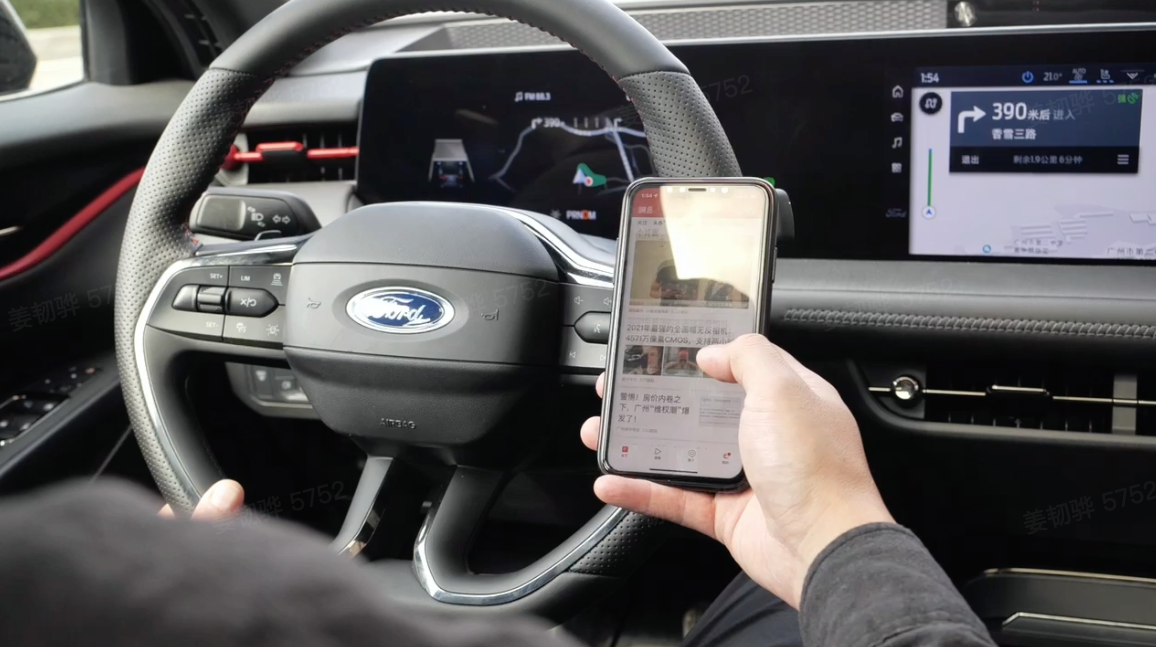
In addition to reminders during vehicle travel, the starting reminder function of the Ford Vehicle-to-Road Cooperative System is also a convenient function. When waiting for a red light, it is inevitable that people will look around, switch to their favorite songs, or check the latest news on their phones.
Although we strongly discourage everyone from looking at their phones when waiting for red or green lights, we cannot deny that it is the current situation. Many people may have encountered situations where the light turns green, but the car in front is still stationary.
The starting reminder can inform you of the remaining time until the light turns green based on the countdown you set. This can prevent distracted attention while waiting for the light and affecting the passage of the car behind you.
Owners can also personalize the start time and sound reminder settings and turn them on or off based on their personal driving habits. I personally think that a sensitivity setting of 5 seconds is just right. When the vehicle beeps and announces “the light will turn green soon,” it is just the right time to start. Here, we do not recommend that everyone be too distracted while driving, even though the vehicle’s auxiliary capabilities are becoming stronger.
Green Wave Speed
Before discussing the speed of the green wave, let’s take a look at what a green wave band is.
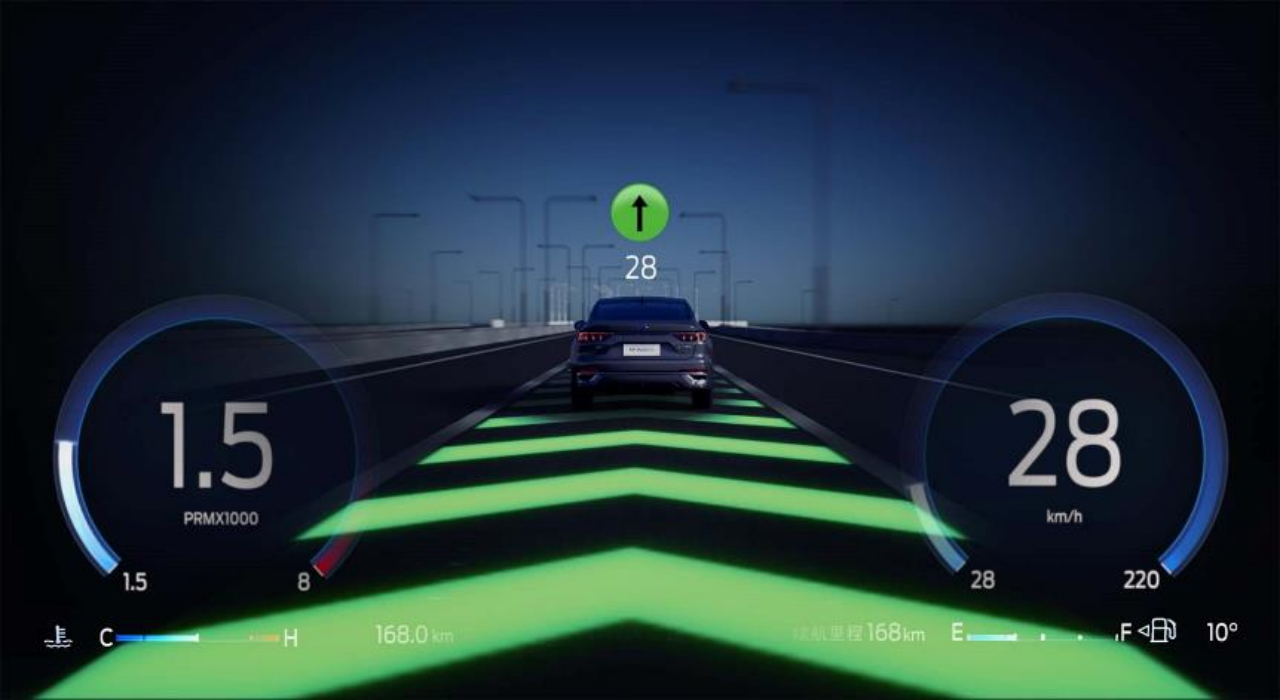
I believe that when you are in a hurry, you have encountered a situation where you rush on the road, but end up hitting all the red lights. Even the car that was driving slowly just now has appeared in your rearview mirror. Seeing this, your blood pressure may rise.The appearance of the green wave band enables the driver to arrive at every intersection with green light while maintaining the speed of the green wave.
The green wave speed function of Ford’s C-V2X is simply to help drivers pass through red and green light intersections in a suitable speed through the arrows and sounds on the instrument panel, and try to achieve green light all the way.
In the actual experience, once my car speed reaches the green wave speed required by the system, the instrument panel will indicate it by a green arrow. There is no specific speed to accomplish it, only by following the green arrow and maintaining that speed can you smoothly pass through the intersection, avoiding the status of abrupt acceleration and deceleration of vehicles.
In terms of interaction, the function currently cannot be linked with adaptive cruise, but merely informs the driver that the green wave state has been entered, and asks the driver to maintain the current speed. If it can be linked with road speed limit and adaptive cruise through OTA upgrade in the future, the user experience can be greatly improved. Especially in national road sections that are relatively closed and have more traffic lights, the practical significance will be further highlighted.
Challenges of V2X
In addition to our expectations for adaptive cruise linkage, the current problem with Ford C-V2X in terms of user experience is that the actual roads covered are still limited. The prerequisite for a valuable function is that it is both easy-to-use and widely applicable, and Ford has already achieved the former but needs to improve the latter.
Looking back at Guangzhou, the Ford vehicle-road cooperative system has opened up 133km of urban roads and 102 intersections. Now, Xi’an has only opened nearly 100 intersections in the Yanta and Yanyu districts, and the actual coverage is constantly expanding.
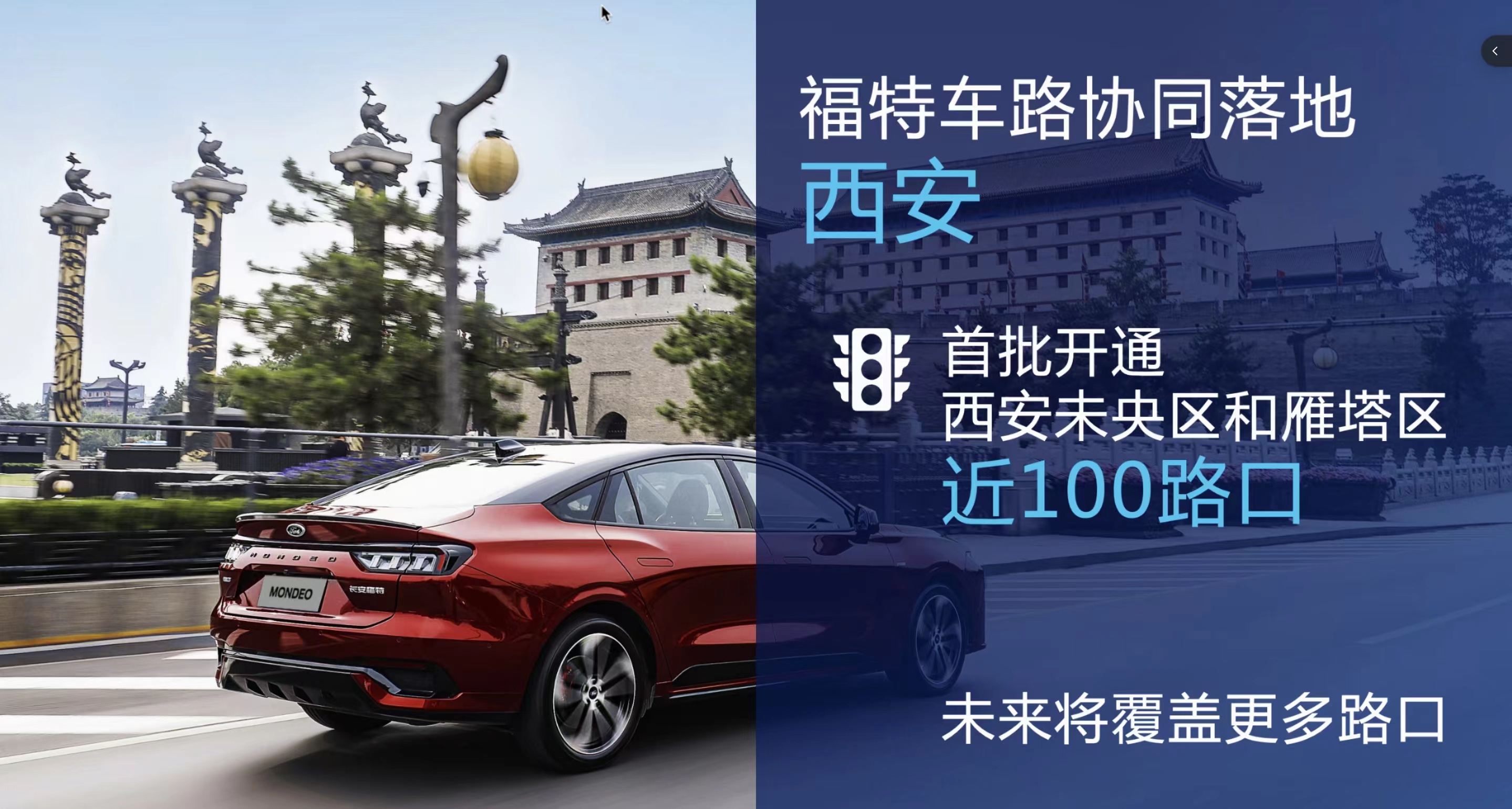 Ford C-V2X’s coverage needs to be further expanded with more partners and government support. On roads not covered by C-V2X, the vehicle instrument panel will always display a message indicating the lack of signal, making drivers feel like something is missing.
Ford C-V2X’s coverage needs to be further expanded with more partners and government support. On roads not covered by C-V2X, the vehicle instrument panel will always display a message indicating the lack of signal, making drivers feel like something is missing.
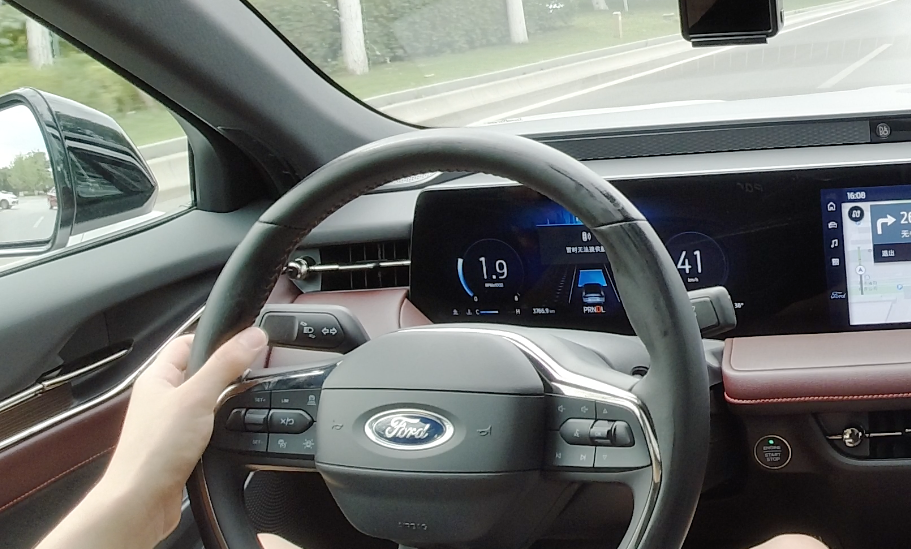
From the feedback of current users, although Ford C-V2X is popular, its overall user base is not large due to its limited coverage. Within five days of its launch in Xi’an, more than 560 people applied and over 220 people received push notifications. As of today, Ford C-V2X has registered over 27,000 users in China, with over 2,700 monthly active users and over 127,000 monthly service requests. If the deployment is expanded quickly and extensively, we believe that the number of push notifications will increase significantly.
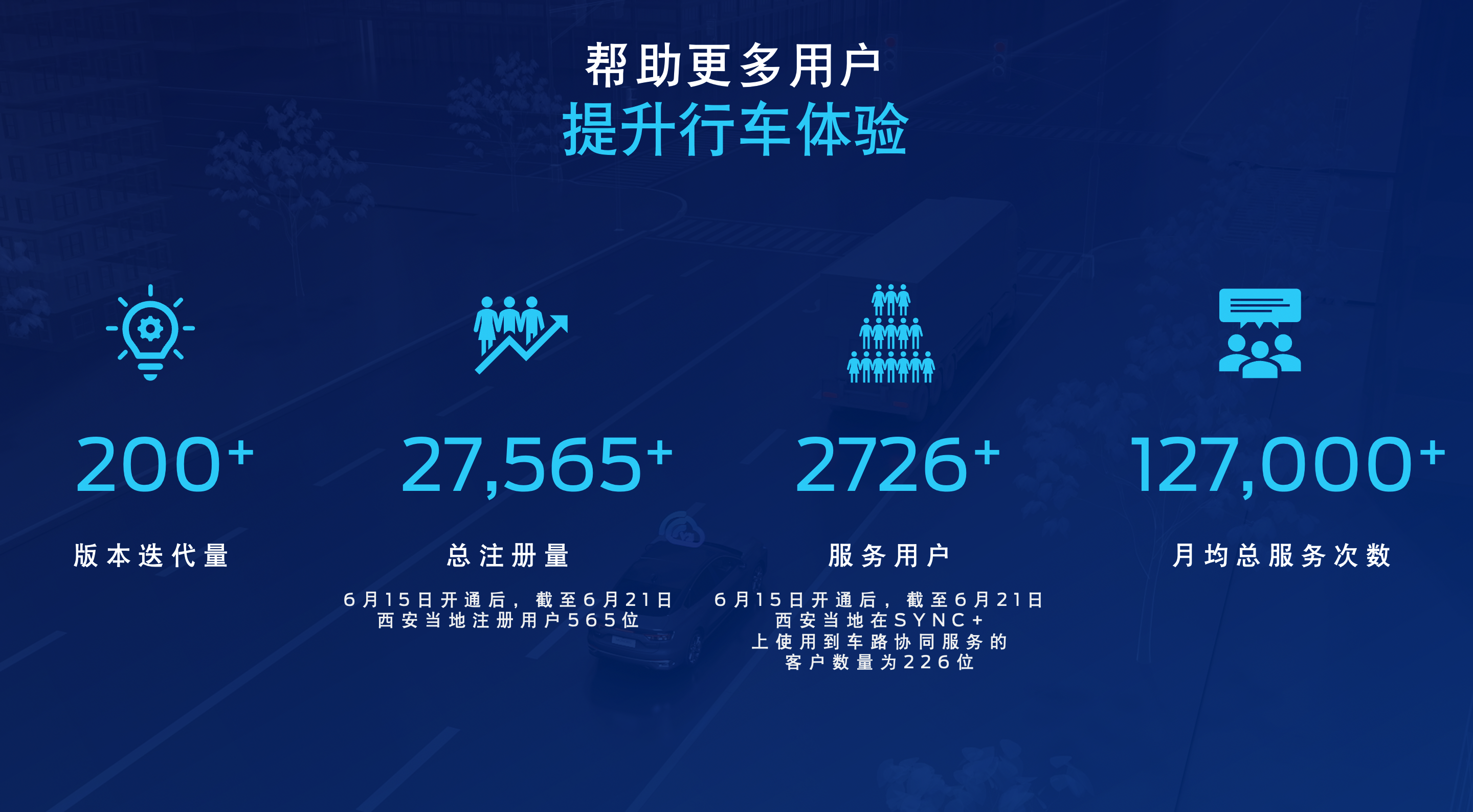
After actual experience, we believe that this is a feature that is “easy to learn but difficult to master” like driving assistance. Meanwhile, C-V2X is also another way to enhance the intelligence level of vehicles. When everyone is focused on chips, sensors, and computing power, C-V2X is a technology that can be integrated into driving assistance and future L3 and L4 autonomous driving.
Does V2X have a future?
The most common question about V2X is its strong reliance on infrastructure, and the need for coordination with infrastructure. Without infrastructure, it is just a concept that cannot be implemented.
Let’s go back to the China Electric Vehicle 100 People’s Congress. Miao Wei, Deputy Director of the Economic Committee of the National Committee of the Chinese People’s Political Consultative Conference, said: So far, including Tesla, mainly single-vehicle intelligence has been used to achieve L2-level intelligent driving, but more and more companies are recognizing the importance of V2X.
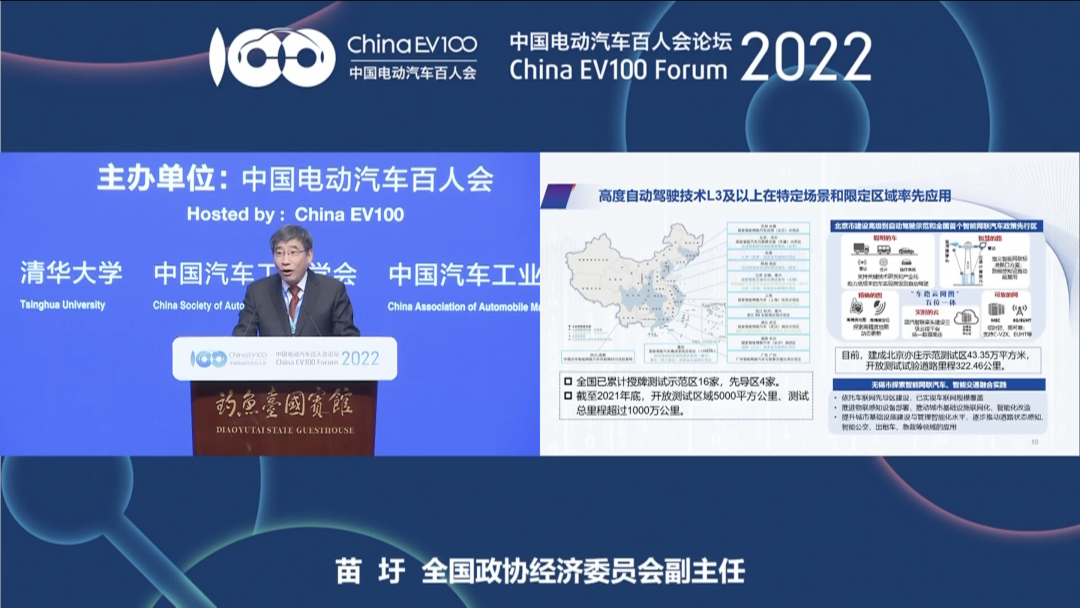
Miao Wei believes that relying solely on single-vehicle intelligence may achieve L2-level intelligent driving, but L3-level intelligent driving is very difficult. The computing power and energy consumption of L4-level intelligent driving are beyond the capacity of a vehicle, so some of the computing power must be shifted from the vehicle to the roadside for edge computing and end-to-end communication through vehicle-road coordination.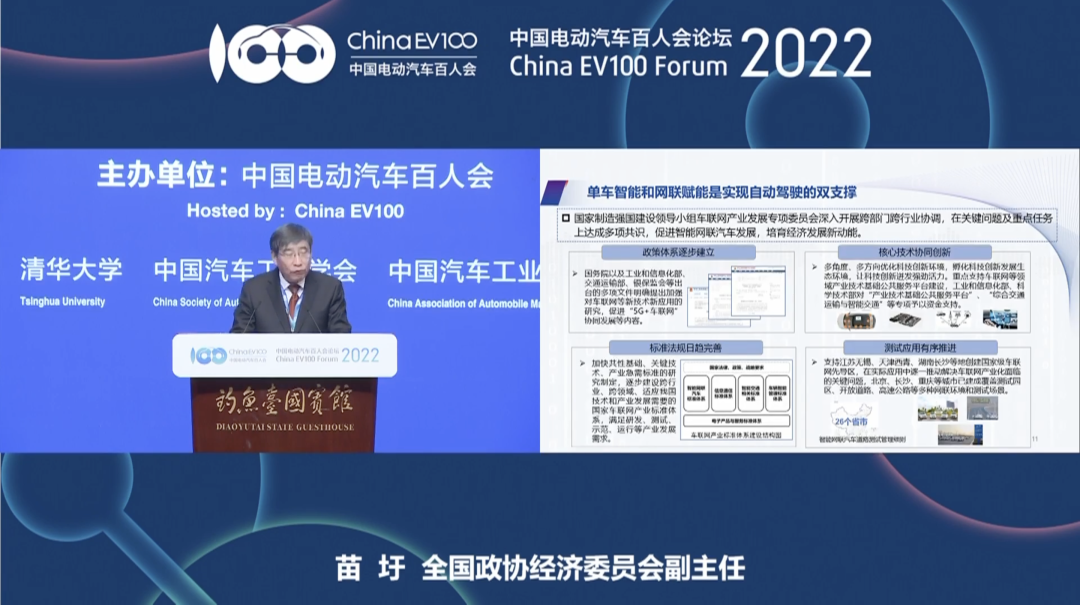
Ford has iterated over 200 versions of V2X since it first conducted technical verification in China in 2017 and officially applied it to mass-produced models in 2021. However, at the same time, Ford also has a Co-Pilot360™ intelligent driving assistance system based on single-car intelligence.
Obviously, the development of single-car intelligence and the development of vehicle-road coordination are not conflicting. At this stage, Ford is handing off the Co-Pilot360™ intelligent driving assistance system to enhance the driving experience while the application of C-V2X vehicle-road coordination technology can provide drivers with more outstanding experience intuitively, and in the future, vehicle-road coordination and vehicle-side intelligence can be combined to achieve advanced level of autonomous driving.
This article is a translation by ChatGPT of a Chinese report from 42HOW. If you have any questions about it, please email bd@42how.com.
